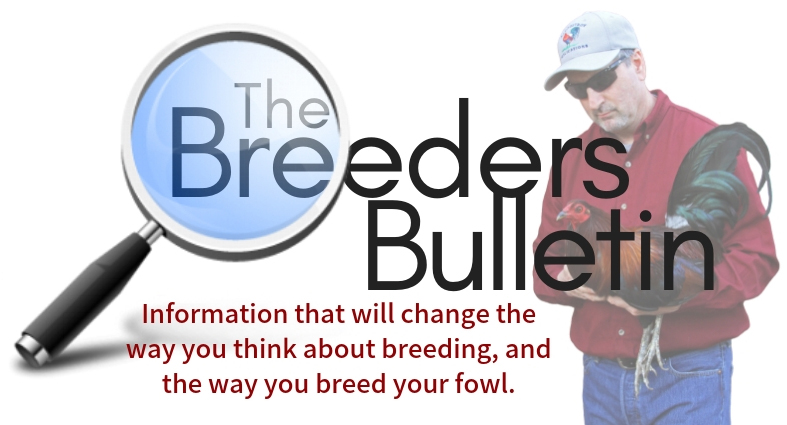And its Influence throughout the World
By Kenny Troiano
Copyright © 2019 by Kenny Troiano/Maximus Troy Publications
It all started with the Wild Junglefowl: The domestication of the Wild Junglefowl set in motion an amazing transformation in the animals that exist among us. Not only were they responsible for the creation and distribution of fowl throughout the world, but they have led to the creation of a large variety of chicken breeds, many of them strikingly beautiful, most of the highly functional. What was the link between the Wild Junglefowl and the modern day chicken? The answer is the gamecock.
Gamefowl were responsible and extremely instrumental in the domestication and widespread distribution of the chicken: Demonstrated by a pastime practiced since the beginning of time, and by many human races throughout the world, the sport of cockfighting has had a tremendous influence on the future of the domestic chicken. Writings from various countries give a great deal of mention or show reference to the sport, and what it has proven is that the sport of cockfighting was responsible and extremely instrumental in the domestication and widespread distribution of the chicken, which eventually became the answer for the large demand for food, via, their eggs and meat. Today, not only do we have sport breeds, but we have egg laying breeds, meat breeds, general purpose breeds, as well as ornamental and exhibition breeds.
When did it all begin?It is difficult to establish with any degree of accuracy the exact time when the Wild Junglefowl were first domesticated and the gamecock was first created because the early records are not all that clear on this point. However, the domestication of the gamecock in India dates as far back as 3200 B.C. In China and Egypt the gamecock dates back to as early as 1400 B.C., although, the chicken appears in the hieroglyphics in the tomb of Mera about 3200 B.C. The modern name for the gamecock, ki or kai, can be traced to the Chou Dynasty, which extended from 1122 to 249 B.C. Ki is defined in a very ancient dictionary and in a glossary of the time of Confucius as “the domestic animal which knows the time.”
However, from India, the gamecock moved northward and westward, against the line of Aryan invasion, and reached Bactria (an ancient country southwest of Asia, between Hindu Kush and Oxus River) and Persia at a very early time in history. Judging by the part that the gamecock played in Persian religion and mythology, its beginnings must have been some time around 600 B.C.
In Grecian literature, the first mention of the gamecock is by Theognia, who was a Greek poet around the time of 310 to 250 B.C., and was regarded as the creator of pastoral poetry.On the other hand, the image of the gamecock appeared on coins from the temple of Artemis at Ephesus at least 700 B.C.
Substantial distributions of the fowl followed the line of the Iranian invasion, which carried the gamecock through Bactria and Persia on into Europe, extending all the way to the British Isles and spreading down into central Italy. Long before Greek colonists carried the bird to southern Italy, it had passed on to the northward and was being carried southward through Italy on the line of an independent advance.
What a lot of people don’t know is that the first European distribution of the gamecock was over land rather than by sea. In fact, the Romans, in their travels, had found to their surprise, that the gamecock was well established and doing very well in England.
The distribution of gamefowl to the south began when the Greeks carried birds southward to the Phoenician cities.
By the time of the Christian era, it seems highly probable that the gamefowl had spread itself over the western parts of Asia and the eastern parts of Europe. From these parts gamefowl were readily transported to other countries including South Africa, Australia, and the Americas.
The distribution of Gamefowl in America:In the United States of America, the raising and fighting of gamefowl started in 1607. This was the year that the English landed at the Island of Jamestown, and became the first settlers to set up permanent residence in this country. They happen to bring with them, in the sailing ships, Old English Gamefowl, which at the time were considered excellent providers of meat and eggs, as well as for recreation. During the first half of the seventeenth century numerous importations of gamefowl were made from England and various parts of Europeto the American continent. Interest in the breeding and fighting of gamefowl increased as the populations grew and new towns were developed, and eventually attempts were made to structure and build a standard of excellence, but with no success.
Birth of the exhibition bird:In 1849 the first poultry show was held in America, which gave them the momentum to develop a standard for the various breeds, including the Old English Gamefowl. From that time on not only were they interested in fighting gamefowl, they were interested in the breeding of all varieties of gamefowl for exhibition purposes.
This increased rapidly until 1873. In that year an organization called “the American Poultry Association” was established. Their objective was to formulate and adopt a standard of excellence that would be used exclusively by poultry associations in awarding prizes on exhibition poultry. A complete standard was adopted for all the recognized varieties of gamefowl and domestic and ornamental classes of poultry, and in 1874 the first “Standard of Perfection” was printed. Since that time, the “Standard” has been periodically revised, and has served as the basis of guidance in the breeding and development of many breeds and varieties. Poultry exhibitions have exercised a remarkable influence in maintaining high standards of excellence of all types of domestic fowl, including some types of gamefowl.
American Games must be a recognized breed:Although, American gamefowl have yet to be recognizedby the American Poultry Association, a problem in which we are presently working on, it’s only a matter of time,for they have been bred true, longer than any other variety of chicken in this country.It’s only fitting that they be acknowledged and standardized.
The benefits of Standardization:With this recognition comes protection, and this protection provides undeniable proof that they are no longer the mutant cousin of the domestic chicken that the Animal Rights portray them to be. I’ve said it before and I will say it again, if we can’t show the Animal Rights, the Humane Society, and more importantly, the general public that finances and supports these organizations that there are other places for our birds than just the pit, we will lose them for sure! They may be gamefowl but they are also good for meat, eggs, and ornamental reasons, and for exhibitions and poultry shows as well.
Someday, genetically, gamefowl are going to save our commercial poultry industry from self-destruction. They have the constitution and genetic pool to fix what the commercial poultry breeders have destroyed through negligent breeding practices.
I hope you enjoyed the newsletter, and that the information which I provide helps you in the eventual improvement and advancement of your family. It is a long journey, but a worthwhile one. Remember, if we all work harder to perpetuate superior fowl, fowl that have the complete package (appearance, temperament and performance), everyone benefits. Hope you have a great summer.
Sincerely, Kenny Troiano

